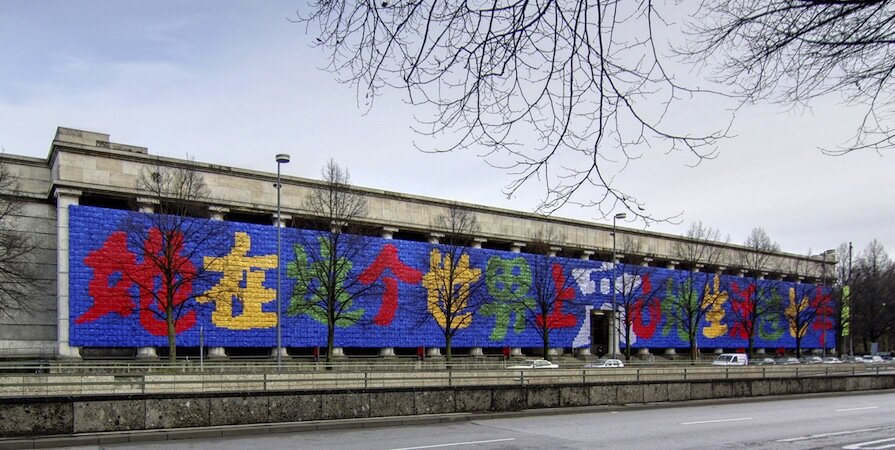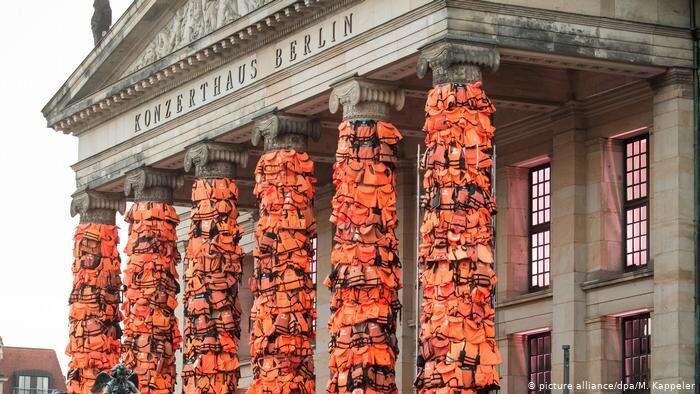Apartheid, Led Zeppelin, Earthquakes, and Moby Dick: Creations Birthed from Crisis
Apartheid, Led Zeppelin, Earthquakes,
and Moby Dick:
Creations Birthed from Crisis
Times of crisis are a huge challenge to all of us. Often breeding personal disaster on top of external disaster.
It is in these hard times that we must let our experiences be the birthing place for new creations. Some of the greatest works have stemmed from times of crisis.
Here are some great pieces of music, film, literature and art that have been created, inspired by crises.
‘When the Levee Breaks’ by Led Zeppelin
Memphis Minnie (left) one of the original writers/performers of
‘When the Levee Breaks’, later covered by Led Zeppelin (right).
‘When the Levee Breaks’ was originally written and sang by Memphis Minnie and Kansas Joe McCoy in 1929. The song was written about the Great Mississippi Flood of 1927, the most destructive river flood in the history of the United States. The disaster destroyed around 130,000 homes and farms, displacing over 700,000 people.
Residents of the area built sandbag walls along the river to stop the flood—known as levees— and some were forced to take shelter on top of them, however, the worsening conditions prompted them to lament about their unstable future, which is where the tune draws its interpretation from. Those who endured the worst were African Americans in the community, who were often forced at gunpoint to build the levees by the white people who operated the refugee camps while suffering systematic poor treatment from the Red Cross. As a result, the lyrics of this song express the horrendous experiences of the oppressed during disaster.
Writing credit to Grassroots Journal.
Moby Dick by Herman Melville
In July of 1852 Herman Melville took a steamer to Nantucket for their first visit to the Massachusetts island, home port of their novel’s mythic protagonist, Captain Ahab, and their ship, the Pequod.
On their last day on Nantucket, Melville met the broken-down 60-year-old who had captained the Essex, the ship that had been attacked and sunk by a sperm whale in an 1820 incident. This person became the inspiration behind Melville’s novel.
Captain George Pollard Jr. was just 29 years old when the Essex went down. They survived and returned to Nantucket to captain a second whaling ship, Two Brothers. But when that ship wrecked on a coral reef two years later, the captain was marked as unlucky at sea and no owner would trust a ship to him again.
Pollard lived out his remaining years on land, isolated and ostracised, as the village night watchman.
Writing credit to Gilbert King.
Neil Blomkamp’s film ‘District 9’
District 9 is a 2009 science fiction action film inspired by events in Cape Town’s District Six, during the apartheid era.
The film is partially presented in a found footage format by featuring fictional interviews, news footage, and video from surveillance cameras. The story explores themes of humanity, xenophobia and social segregation.
Beginning in an alternative 1982, an alien spaceship appears over Johannesburg, South Africa, and a population of sick and malnourished insectoid aliens are found aboard the ship. The South African government confines them to an internment camp called District 9. Years later, during the government's relocation of the aliens to another camp, one of the confined aliens named Christopher Johnson tries to escape with his son and return home, crossing paths with a bureaucrat named Wikus van der Merwe.
The treatment of the insectoids, and protagonists, throughout the film brings to life the cruelty of xenophobia and social segregation from a first hand perspective. Exploring the effects, from the ground, on real people in mass crisis events.
Writing credit to Wiki.
‘Remembering’ by Ai Weiwei
In 2009, the dissident artist Ai Weiwei created work to honour the thousands of children who died in the Sichuan earthquake.
More than 80,000 lives disappeared, many of the dead were young people at school and university.
The Chinese government censored and controlled all of the information about the earthquake, so people didn’t know the details of what really happened. So Weiwei decided to cover the Haus der Kunst museum’s facade with one sentence from a victim’s mother. She had written to me: “All I want is to let the world remember she had been living happily for seven years.” This beautiful little girl was just the same as any other: she liked to dance, to sing. But suddenly – because of the negligence of the government, the corruption in construction – there wasn’t a safe building for her to go to school in.
The project, ‘Remembering’, angered China’s rulers – and changed his career for ever.
The Haus der Kunst is a historical building. The architects made it especially for Hitler. They all knew he loved art but had never been accepted as an artist. He criticised any work he considered “degenerate” – any abstraction or early examples of surrealism. So to cover that museum’s facade was a very political act, a very dramatic act. It took 9,000 student backpacks to construct that sentence.
Of course, there is a front door to the museum, so people had to pass right through this sentence. They didn’t understand the Chinese writing, so it forced them to find out, to learn, to read about the show. Munich is a city full of art lovers and collectors and it became very popular.
Writing credit to Ai Weiwei.
Share with us
During this crisis, what are you inspired to create?
What great works, created from crises, have influenced you?






